Abstract
Two training procedures were compared with respect to the average number of training trials it took to teach new verbal responses to normal children. Mand contingencies were alternated with tact contingencies in one condition while only tact contingencies were in effect in the other condition. Normal, preschool children served as subjects and toy parts were the objects that were to be named. The results indicated that it took, on the average, fewer trials to teach part names (tacts) in the mand-tact condition than in the tact only condition. Although more research is needed to confirm this, it appears that mand contingencies involve stronger controlling variables and can facilitate the acquisition of a tact repertoire.
Full text
PDF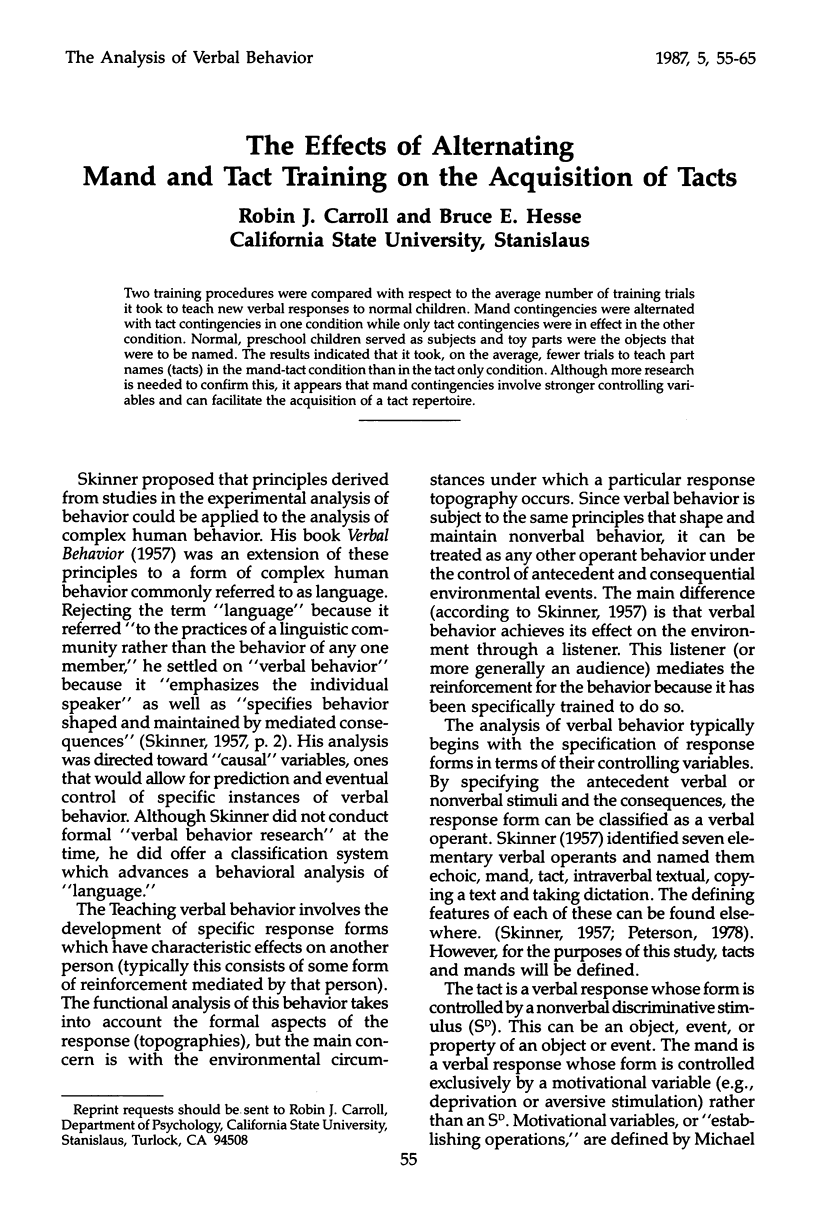
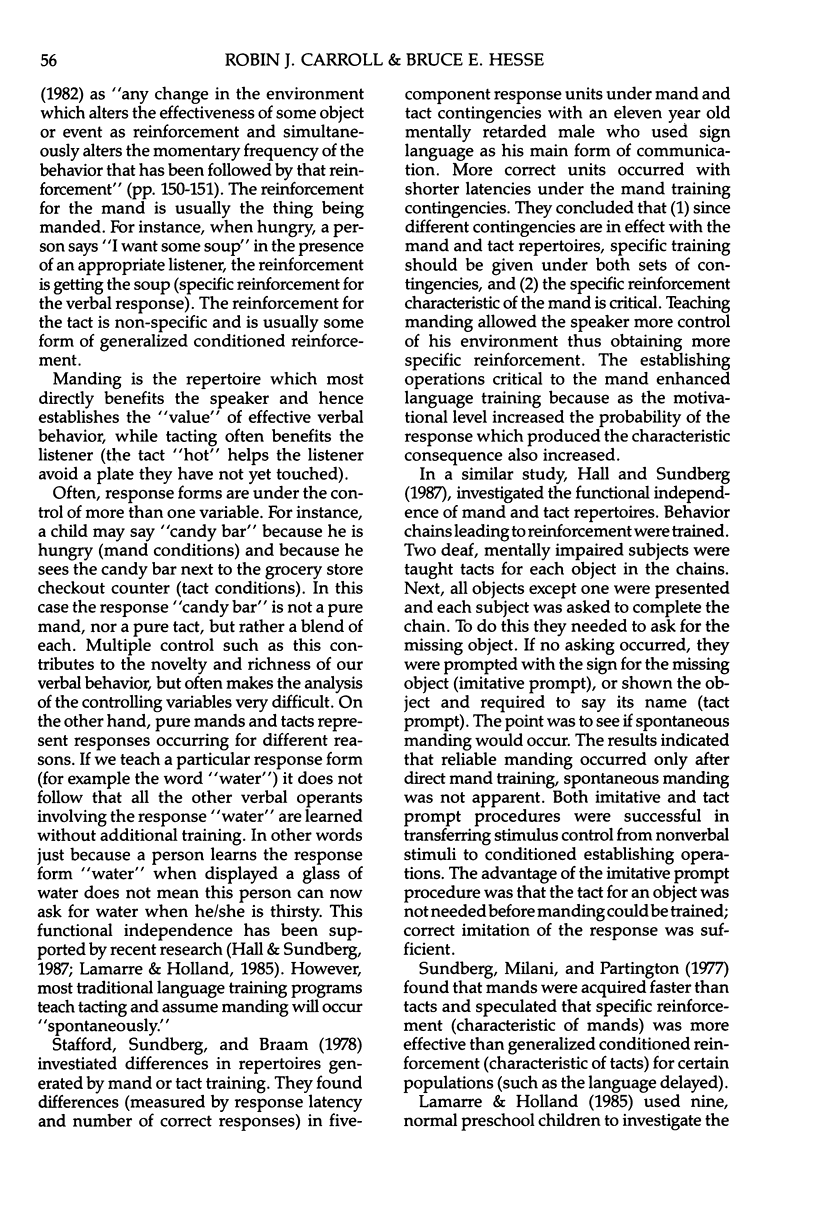
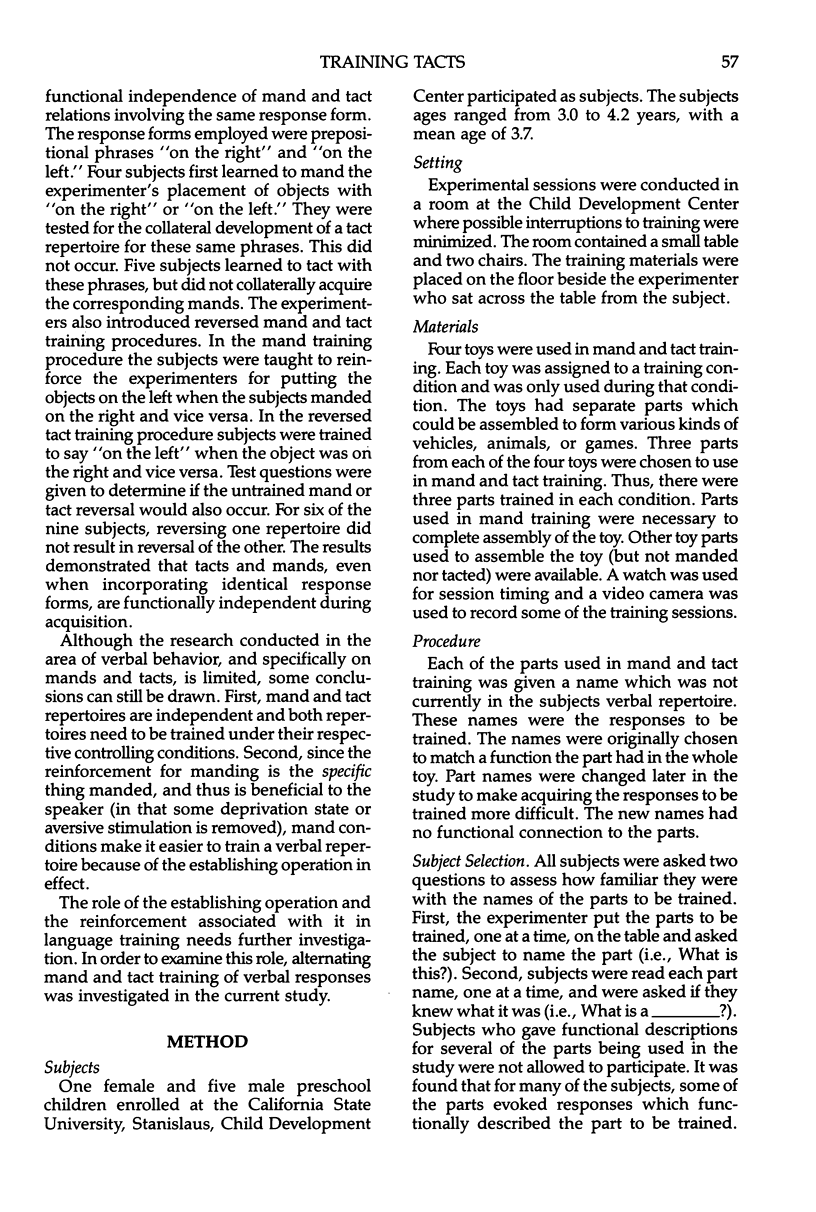
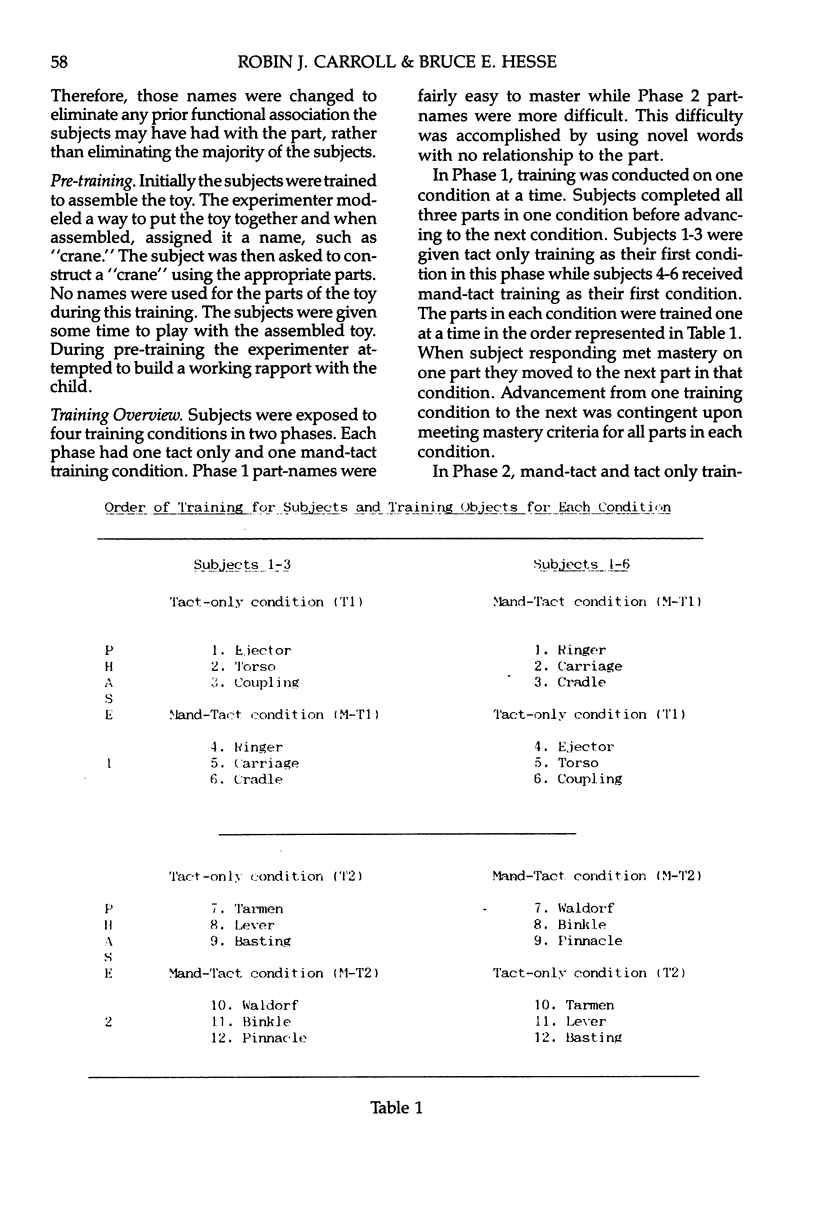
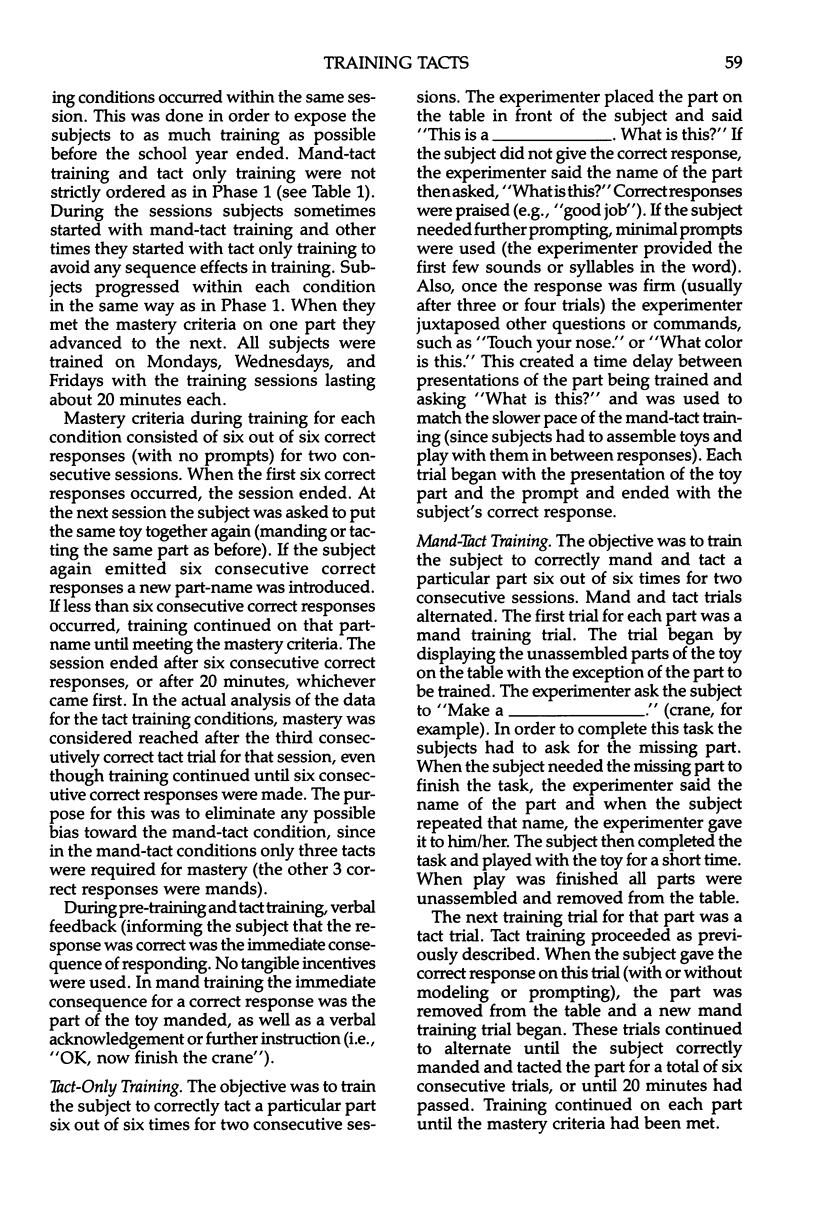
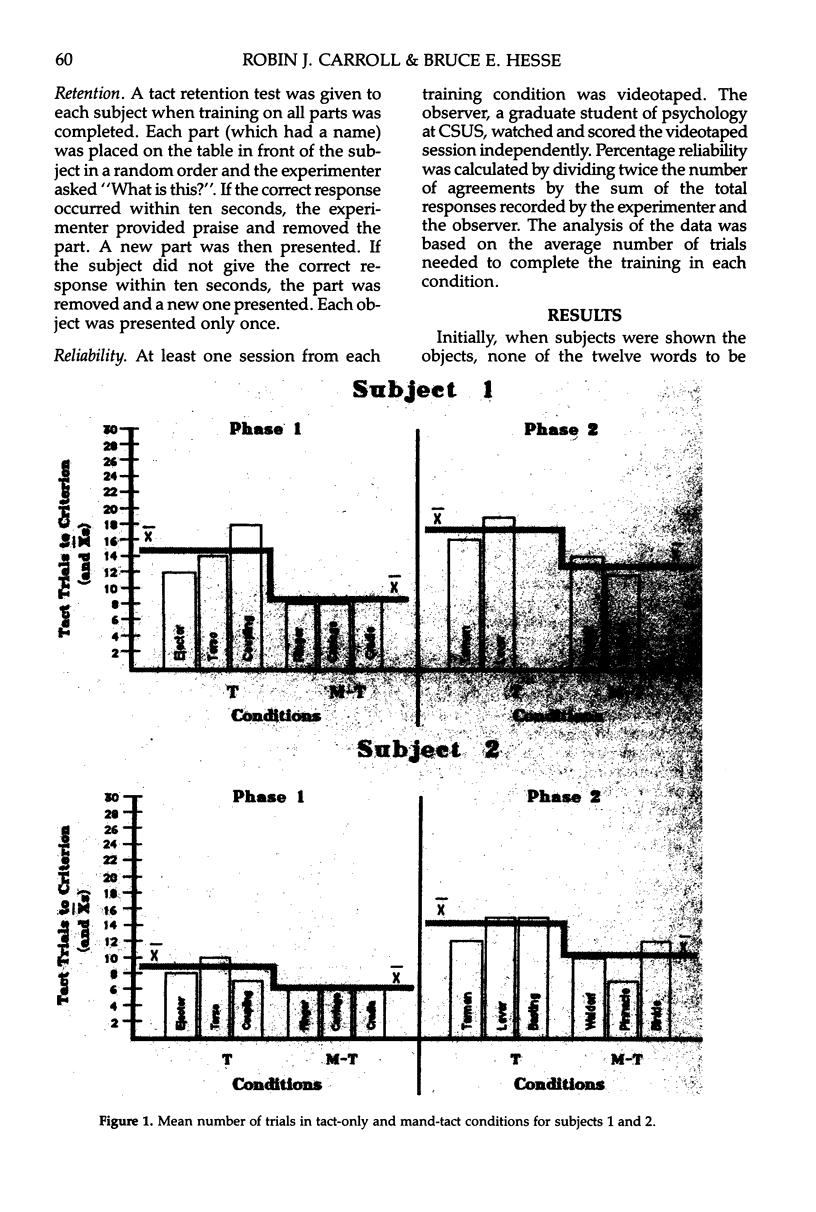
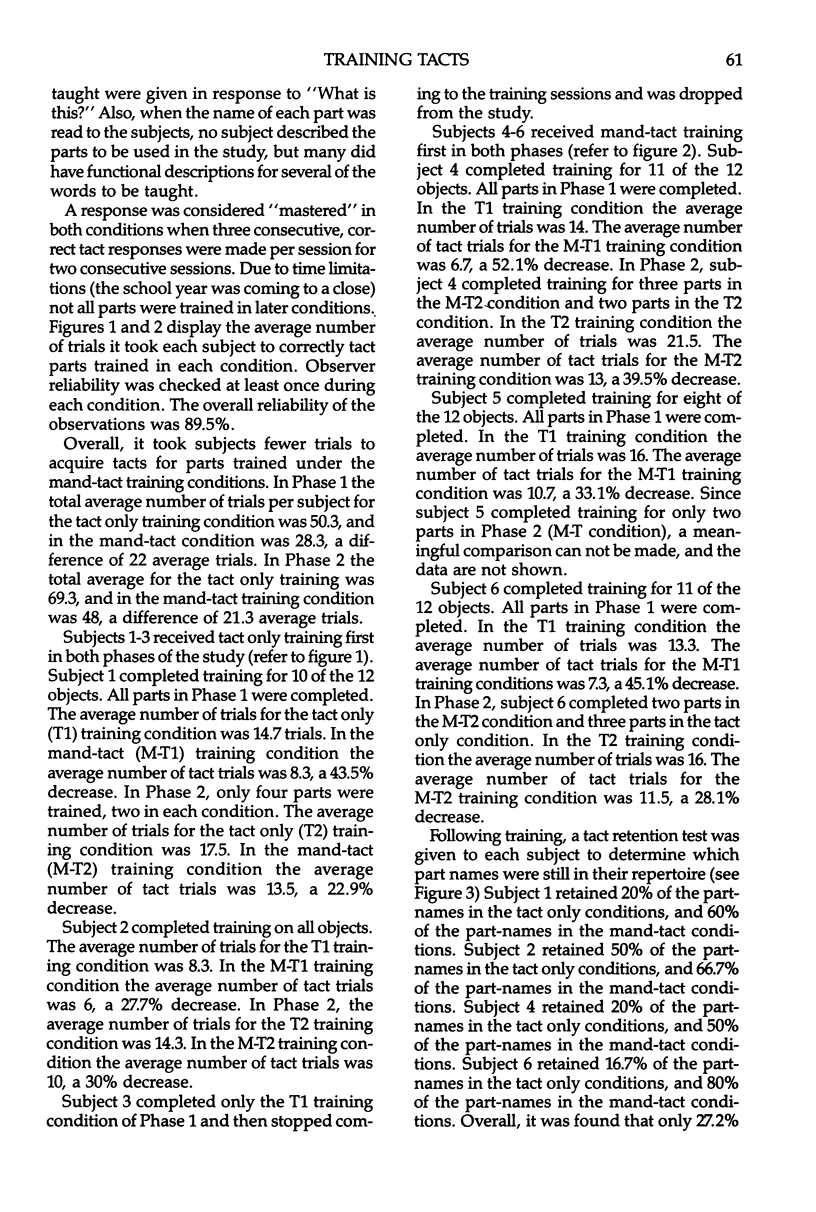
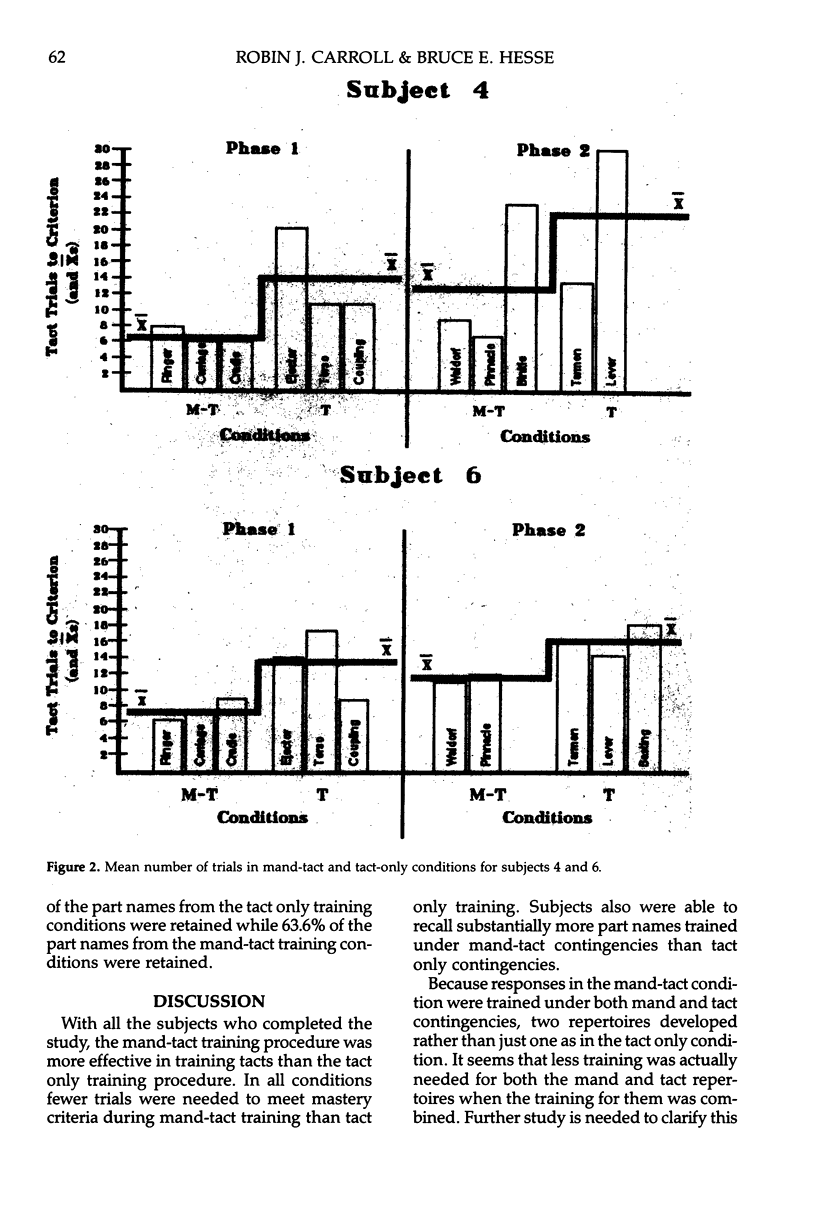
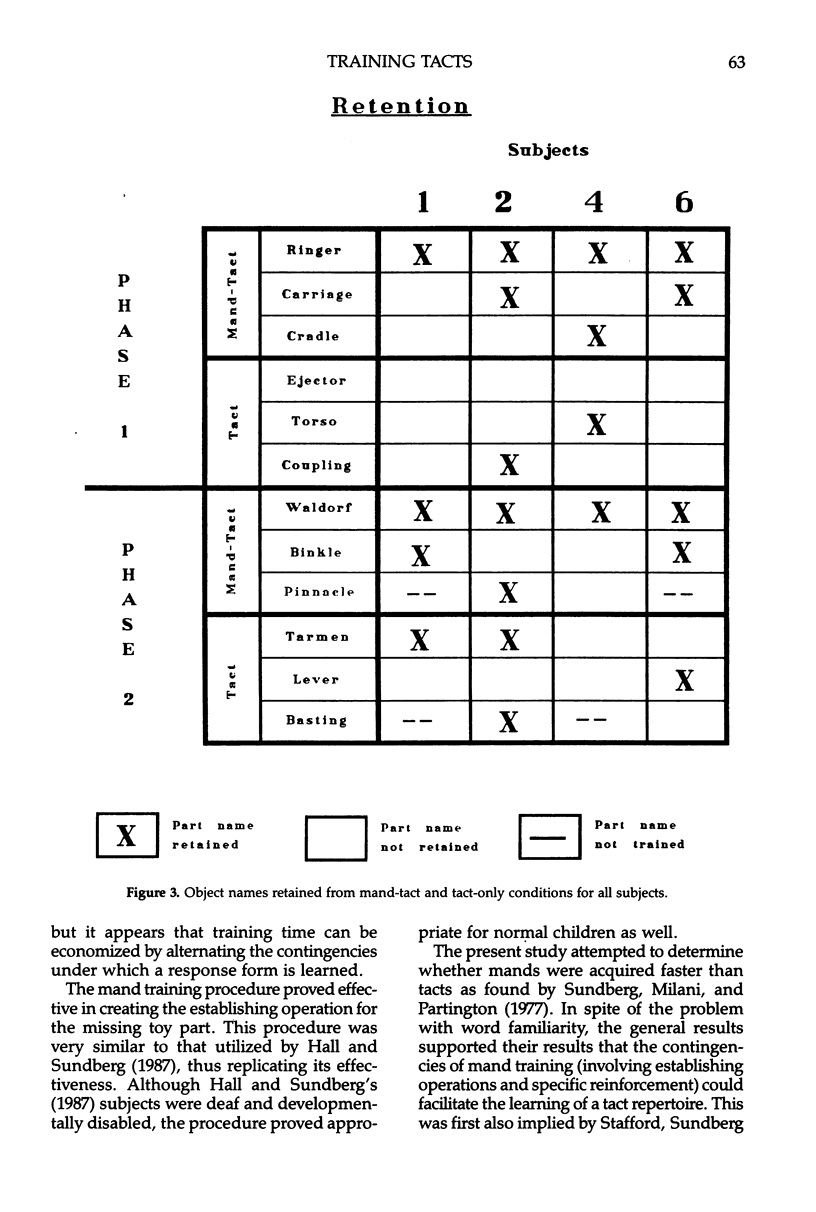

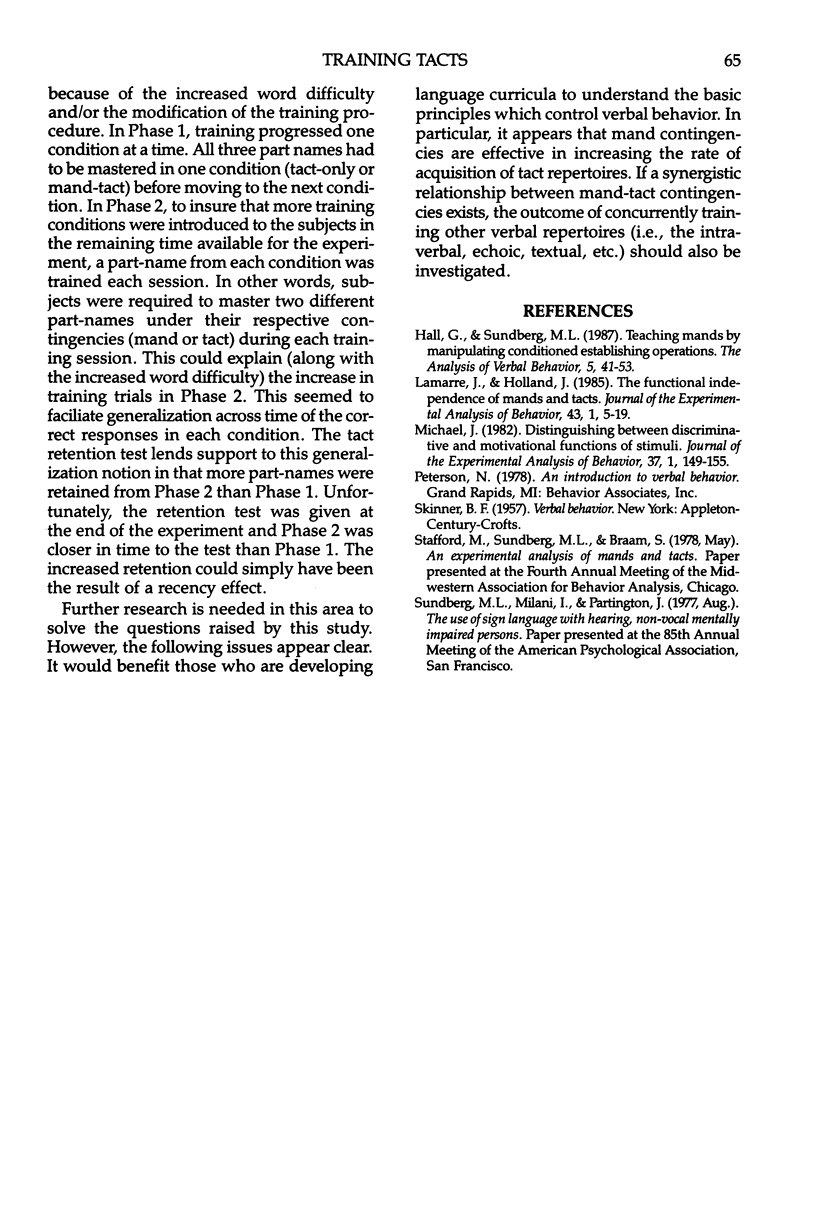
Selected References
These references are in PubMed. This may not be the complete list of references from this article.
- Lamarre J., Holland J. G. The functional independence of mands and tacts. J Exp Anal Behav. 1985 Jan;43(1):5–19. doi: 10.1901/jeab.1985.43-5. [DOI] [PMC free article] [PubMed] [Google Scholar]
- Michael J. Distinguishing between discriminative and motivational functions of stimuli. J Exp Anal Behav. 1982 Jan;37(1):149–155. doi: 10.1901/jeab.1982.37-149. [DOI] [PMC free article] [PubMed] [Google Scholar]


